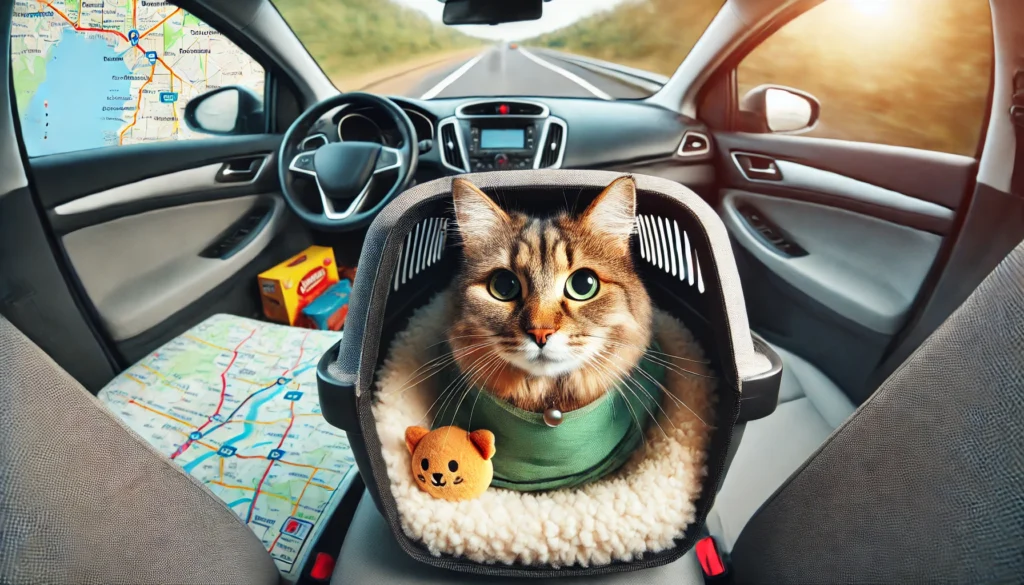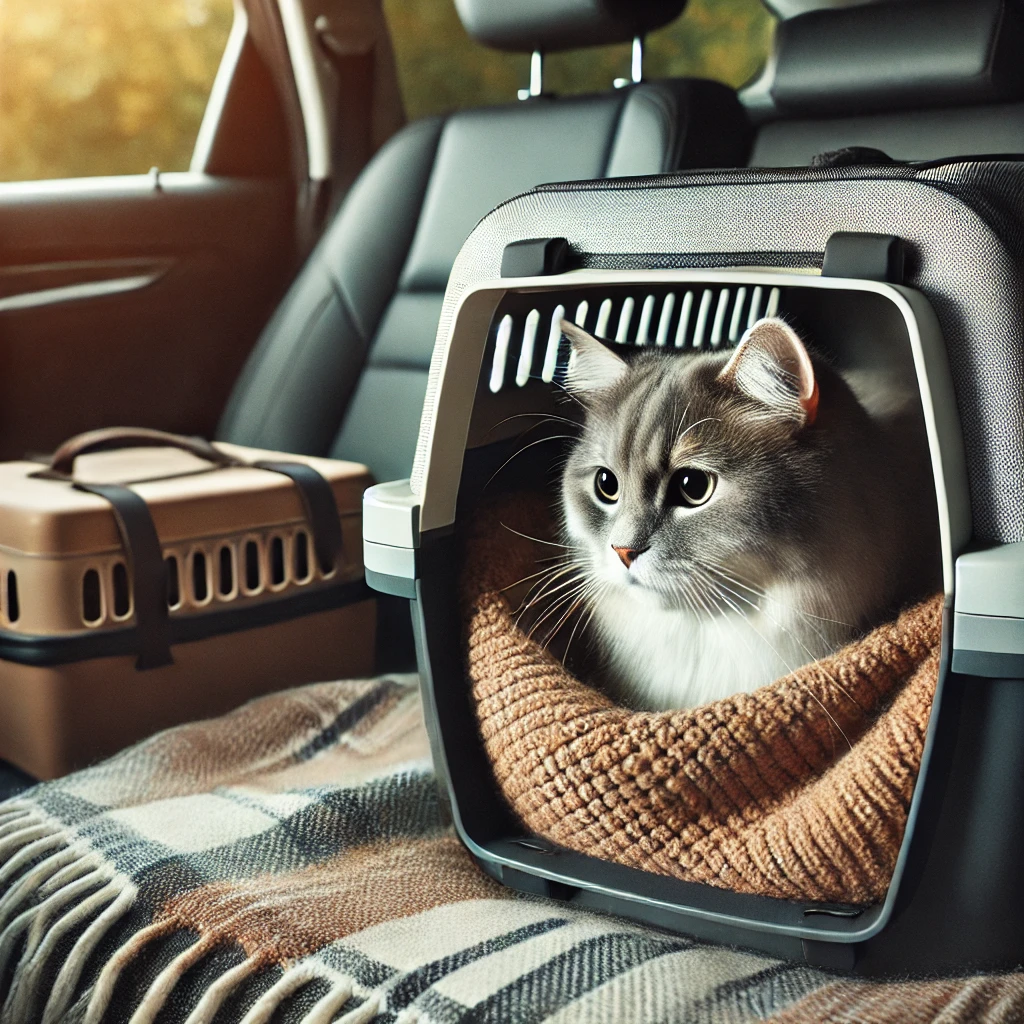Traveling cross-country with a cat may seem daunting, but with proper preparation, it can be a safe and enjoyable experience for both the pet and the owner. Understanding the unique needs of cats, as well as the logistics of travel, can help ensure that your journey is smooth and stress-free. This article provides a comprehensive guide to taking cats cross-country, examining key factors, challenges, and approaches to ensure a positive experience.
Preparation: Vet Visits and Health Considerations

Before embarking on a cross-country trip, take your cat to the vet for a complete check-up. Ensuring your cat is in good health is essential for travel, as illnesses can worsen during long journeys. Discuss any specific travel-related health concerns with your vet, such as motion sickness, anxiety, or dietary adjustments.
- Health Documentation: If crossing state borders, you may need vaccination records or a health certificate. Check state regulations to avoid potential issues at checkpoints.
- Preventative Measures: Ask your vet about any medications that may help with anxiety or motion sickness. Consider flea, tick, and heartworm preventatives, as travel exposes pets to various environments.
Choosing the Right Carrier
The carrier is one of the most critical factors for safe travel with a cat. When selecting a carrier, prioritize safety, comfort, and ease of transport.
- Size and Comfort: Choose a carrier that allows your cat to sit, stand, and turn around comfortably. Soft-sided carriers can be comfortable, but hard-sided carriers provide more protection.
- Safety Features: Look for carriers with sturdy locks, as curious cats may try to escape. Ventilation is also essential to keep your cat calm and comfortable.
- Familiarization: Allow your cat to explore the carrier at home for a few weeks before the trip. Place familiar items, such as a favorite blanket or toy, to make it feel more like a safe space.
Managing Cat Anxiety and Comfort
Cats are creatures of habit, and travel can disrupt their routine, leading to anxiety. Addressing comfort and minimizing stress is essential.
- Gradual Acclimation: Familiarize your cat with car travel by taking brief trips before the big journey. This can help reduce their anxiety associated with movement and unfamiliar sounds.
- Environment Control: Use calming sprays, such as pheromone-based products, inside the carrier to create a soothing environment. Maintain a comfortable temperature in the vehicle to prevent overheating.
- Breaks and Rest: Schedule regular breaks every 2-3 hours to allow your cat to stretch, drink water, and use a portable litter box if needed.
Travel Options: Car, Plane, or Train?
Choosing the mode of transportation is another significant decision. Each method has its pros and cons, which depend on your cat’s temperament, your timeline, and comfort level with each option.
- Car Travel: The most flexible and common way to travel with a cat. You can control stops, breaks, and the environment, making it easier to meet your cat’s needs.
- Pros: Complete control over the environment, flexibility with breaks, and familiar spaces.
- Cons: Longer travel time, which may increase stress for some cats.
- Plane Travel: If time is a concern, flying may be a suitable option. However, not all airlines allow pets, and those that do often have strict regulations.
- Pros: Faster travel, ideal for long-distance journeys.
- Cons: Limited in-flight care options, cramped space, potential exposure to loud noises, and high travel costs.
- Train Travel: Some trains allow cats, making it an alternative to car travel, especially if you want to avoid the hassle of driving.
- Pros: Less stressful than flying, spacious cabins, and the chance to walk around.
- Cons: Limited pet-friendly options, longer travel times than flying.
Essential Supplies for Cross-Country Travel

When traveling with a cat, packing the right supplies is essential. Aim to bring familiar items to create a sense of consistency.
- Portable Litter Box: A foldable litter box is practical for car travel. If flying, plan to use the airport facilities or disposable litter trays.
- Food and Water: Bring enough food for the journey and an extra supply in case of unexpected delays. Use spill-proof water and food bowls, and pack dry cat food for convenience.
- Comfort Items: Blankets, toys, and bedding from home can help your cat feel more secure.
- First Aid Kit: Include essential first aid items, such as bandages, antiseptic, and any medications your cat may need.
Safety Considerations for Cross-Country Cat Travel
Safety is paramount, both in terms of physical well-being and emotional comfort. Here are a few practical tips to keep in mind:
- Car Safety: Never allow your cat to roam free in the car, as this can be dangerous in case of sudden stops or accidents. Always keep your cat in its carrier.
- Identification and Microchipping: Make sure your cat wears a collar with an ID tag, and consider microchipping as a backup. This is crucial in case your cat escapes during a stop or in an unfamiliar environment.
- Emergency Planning: Research emergency vet clinics along your route in case of health issues.
Overnight Stays and Lodging Options
If your trip requires an overnight stay, plan to find pet-friendly accommodations.
- Pet-Friendly Hotels: Many hotels and motels welcome pets, though policies vary. Call ahead to confirm and ask about any restrictions or fees.
- Preparing the Room: Upon arrival, cat-proof the space by ensuring windows and doors are closed. Set up a designated “safe space” with your cat’s litter box, food, and bedding.
- Routine and Comfort: Stick to your cat’s feeding and sleeping schedule to minimize stress and maintain some semblance of routine.
Addressing Potential Challenges and Tradeoffs

Each approach to cross-country travel with a cat has its challenges and requires inevitable tradeoffs. Car travel may take more time but offers flexibility and control, while plane travel, though faster, can be stressful and less customizable. Understanding your cat’s temperament and travel preferences is essential in making the right choice. For some cats, the confinement of a plane may be more stressful than the longer, yet customizable, car ride.
Conclusion: Prioritizing Your Cat’s Well-Being on the Road
Taking your cat cross-country is possible with the proper planning and considerations. Balancing factors, such as safety, comfort, and the mode of travel, can significantly affect the overall experience. By taking the time to understand your cat’s needs, preparing in advance, and being flexible, you can ensure that your journey is a safe, comfortable, and memorable experience for both you and your feline companion.
This guide serves as a starting point for anyone considering taking their cat on a cross-country adventure. The journey may come with challenges, but with proper preparation, it’s an achievable and rewarding experience. Safe travels!

Hi, I’m Sondip,
I’m a writer who loves to help people solve their problems. I write about small animals like mice and other small animals and even pests.

